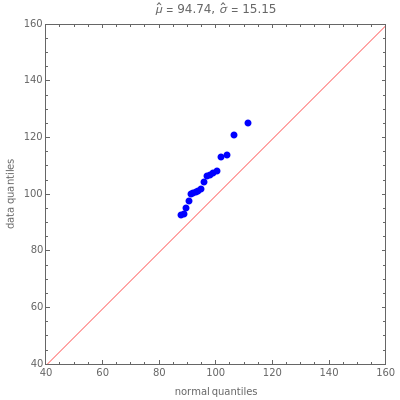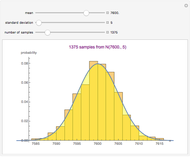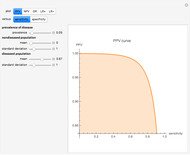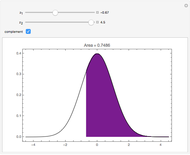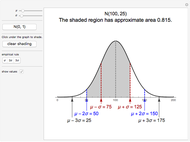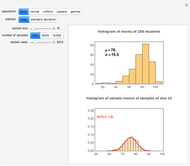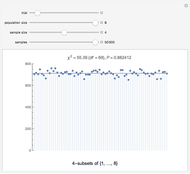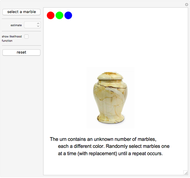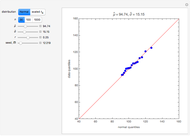Estimating and Diagnostic Checking in Censored Normal Random Samples

Requires a Wolfram Notebook System
Interact on desktop, mobile and cloud with the free Wolfram Player or other Wolfram Language products.
A random sample of size  is simulated from either a normal or scaled
is simulated from either a normal or scaled  distribution with mean 100 and standard deviation 15. It is then left-censored corresponding to a detection level
distribution with mean 100 and standard deviation 15. It is then left-censored corresponding to a detection level  , where
, where  is the censor rate and
is the censor rate and  is the inverse normal cumulative distribution function. The plot shows the data quantiles plotted against the corresponding quantiles in a normal distribution with mean
is the inverse normal cumulative distribution function. The plot shows the data quantiles plotted against the corresponding quantiles in a normal distribution with mean  and standard deviation
and standard deviation  , where
, where  and
and  are estimates that are initially set to
are estimates that are initially set to  and
and  . We imagine a robust fitting line that passes through the bulk of the points. Then adjusting
. We imagine a robust fitting line that passes through the bulk of the points. Then adjusting  shifts the location of this line while
shifts the location of this line while  shifts its slope. By adjusting
shifts its slope. By adjusting  and
and  dynamically using the controls, we can find parameter values for which the hypothetical line lies on the 45° line. In other words, the bulk of the data will lie on the 45° line.
dynamically using the controls, we can find parameter values for which the hypothetical line lies on the 45° line. In other words, the bulk of the data will lie on the 45° line.
Contributed by: Nagham Muslim Mohammad and Ian McLeod (August 2013)
(Department of Statistical and Actuarial Sciences, Western University)
Open content licensed under CC BY-NC-SA
Snapshots
Details
Snapshot 1: by using the maximum likelihood estimates (i.e., setting,  and
and  ), we can use this plot as a model diagnostic to check the adequacy of the normality assumption; in this case, we conclude the model is adequate
), we can use this plot as a model diagnostic to check the adequacy of the normality assumption; in this case, we conclude the model is adequate
Snapshot 2: the data was generated from the scaled  distribution and is not well fit using the Gaussian MLE
distribution and is not well fit using the Gaussian MLE
Snapshot 3: a better fit and better estimates of the true parameter values  and
and  to the data shown in snapshot 2 are obtained by using the dynamic graph
to the data shown in snapshot 2 are obtained by using the dynamic graph
Gaussian maximum likelihood estimation is often used to estimate the mean and standard deviation in normal random samples [1]. As suggested in [2], the EM algorithm provides an effective algorithm for implementing Gaussian maximum likelihood estimation with censored samples, and this method is used in this Demonstration.
References
[1] M. S. Wolynetz, "Algorithm AS 138: Maximum Likelihood Estimation from Confined and Censored Normal Data," Journal of the Royal Statistical Society. Series C (Applied Statistics), 28(2), 1979 pp. 185–195.
[2] C. R. Robert and G. Casella, Monte Carlo Statistical Methods, New York: Springer, 2004.
Permanent Citation

